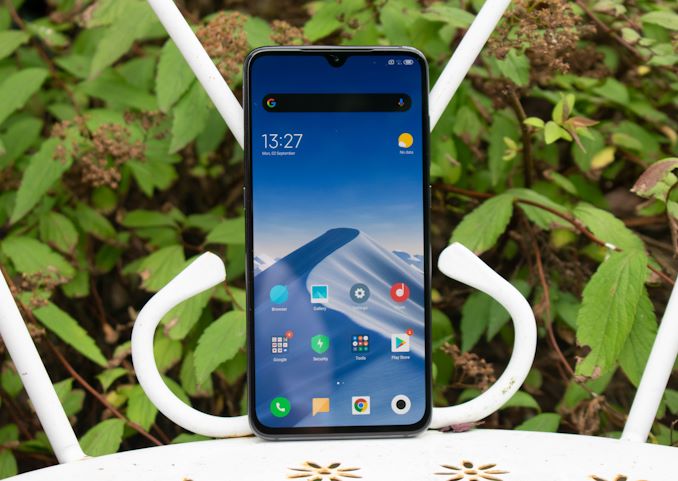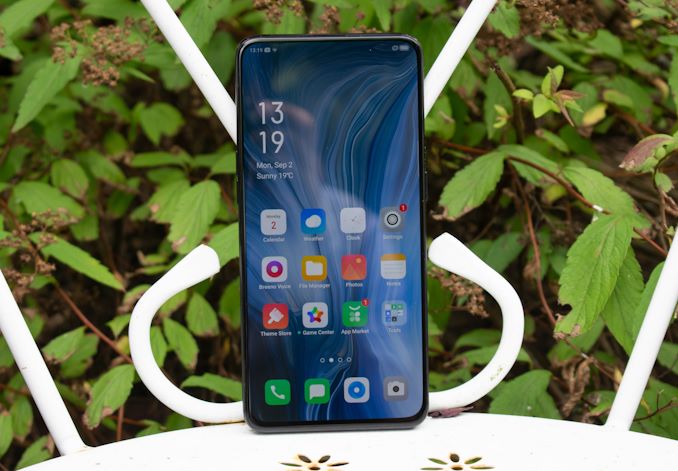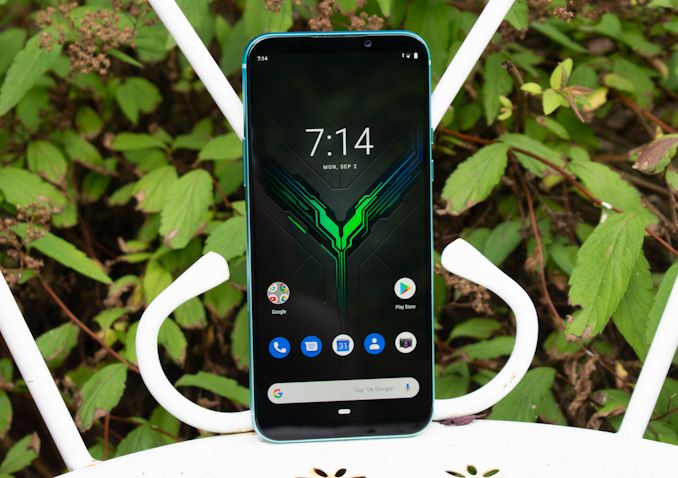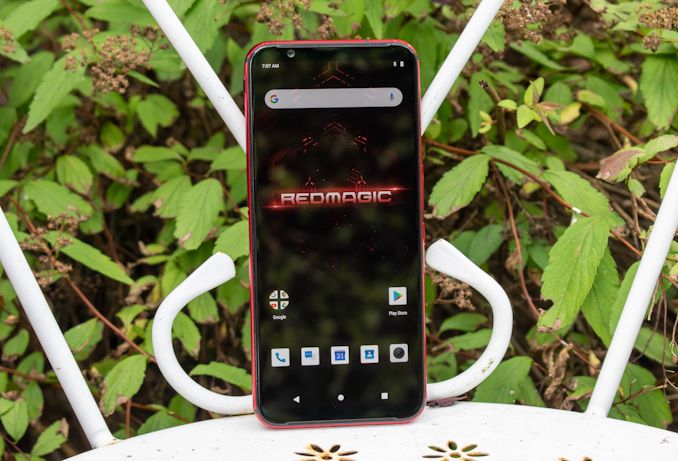The Snapdragon 855 Phone Roundup: Searching for the Best Implementations
by Andrei Frumusanu on September 5, 2019 8:30 AM ESTTop Devices - China & Gaming Contenders
Aside from the well-known phones in western markets, we’ve seen Chinese vendors have quite large success in European and other global markets. These devices are less prevalent in the US, however they can offer some unique value and differentiating experiences compares to the usual brands.
Xiaomi Mi9
Xiaomi Mi9 family of phones were among the first Snapdragon 855 devices to be released, hitting the streets at the same time as Samsung’s S10 series. Xiaomi in particular seems to be a leading vendor cooperating very closely with Qualcomm in defining the experience of their devices.
What stands out for the Mi9 is that when it was released, it came at an incredible price-point of only 449€, vastly undercutting other offerings with the high-end Snapdragon 855. Today the Mi9 can be had for as little as 376€, which remains one of our top picks at this price point.
The Mi9 is on the smaller side when it comes to form-factors, and it’s the smallest device amongst today’s roundup, even though by any means it can still be considered a big phone by traditional standards. The build quality of the phone stands out – it’s a very solid yet lightweight device that punches far above its weight and price. Xiaomi still employs a triple-camera setup which puts it on par with other flagship devices this year. The camera quality also manages to easily compete with that of other devices such as the OnePlus 7 Pro – not a big surprise as it’s among the many devices this year using the popular IMX586 camera sensor. In fact, all devices on this page use the same sensor.
Compromises for the Mi9 fall in aspects such as only having a mono-speaker and its battery life being only about average – two well worth compromises for an otherwise incredibly attractive price-to-performance package.
Full review to follow in the next weeks.
OPPO Reno 10x Zoom
OPPO’s main focused for the last several years has been the Chinese market where they’re incredibly successful in, being one of the top smartphone vendors there. Recently, OPPO has decided to enter western market and this year has launched its flagship device sin various markets in Europe. The OPPO Reno series is marked as also having distinguished designs with bezel-less full-screen experiences. The display panel remains an OLED, but unlike the OP7Pro, this remains a 1080p 60Hz unit. We find a similar slide-out front-camera mechanism, just this time around it’s a wedge design instead of the rectangular slide-out on the OP7Pro.
Key characteristics of the OPPO Reno 10x zoom is basically spoiled by the device’s name: It has an augmented telephoto module capable of up to 10x hybrid zoom (6x optical) thanks to the sensor being laid out in a 90° angle and looking out the back of the phone thanks to a mirror prism. It’s the same kind of mechanism that Huawei used on the P30 Pro, but has the same issues of not being that particularly useful in everyday photography. The phone also employs wide-angle and ultra-wide-angle modules, and seemingly is actually able to provide a better image capture experience than say the OP7Pro, even though having the same or very similar sensors all whilst having the same SoC chipset for processing.
Full review to follow in the next weeks.
Xiaomi Black Shark 2
In the last year or two we’ve seen increased popularity in so called “gaming phones”. The design of these smartphones is straight out of the book of laptop manufacturers who offer specialized “gaming laptops” that are characterized by their unmistaken “gaming design accents” – for a lack of a better description.
Xiaomi last year with the original Black Shark was among the first to offer such phones, and this year we saw the follow-up with the Black Shark 2. The phone’s key differentiators here is that it’s offering a more “robust” design as well as a hardware switch that puts the phone in a dedicated gaming mode with a different software launcher optimized for a gaming experience, separating it from the more vanilla Android experience that the phones ship with.
Hardware wise, things are very similar to the Mi9 and the camera employs the same main sensor and telephoto lens as on its sibling device. Differences with the gaming design is that Xiaomi is employing dual front facing speakers.
The one aspect you’d expect gaming phones such as the Black Shark 2 to be optimized for is their thermal dissipation design, offering better SoC cooling and thus able to deliver long-term gaming performance. Unfortunately the Black Shark 2 didn’t fare very well in this regard and it’s among the weakest phones we’ve come to test when it comes to thermal stress performance.
Full review to follow in the next weeks.
ZTE Nubia RedMagic 3
Another device that can be strictly put in the category of “gaming phones” such as the Black Shark 2 is ZTE’s Nubia RedMagic 3. This might come out of the blue for most readers as many will have no heard of the device, however it offers some very interesting hardware features.
It offers a 1080p 90Hz screen which ticks off this aspect of a gaming phone. ZTE offers the same popular hardware switch on the phone which puts the device into a dedicated gaming mode with custom app launcher.
We’ll be covering the device in more detailed fashion in a dedicated review, but the most interesting aspect of the device is the fact that it has an actual fan in it. Yes you’re read that right, the phone actually has a small active cooling fan along with air intake and exhaust – something I definitely wanted to put through our GPU testing methodology to see if actually makes any difference and helps with prolonged gaming performance.
Full review to follow in the next weeks.














47 Comments
View All Comments
yeeeeman - Thursday, September 5, 2019 - link
Andrei, this is nice, but we could guesstimate how an 855+ will behave.We really want to see Exynos 9825 since that is harder to estimate.
Andrei Frumusanu - Thursday, September 5, 2019 - link
I don't have the 9825/Note10 yet, we'll have to buy one. Currently this won't happen till maybe October as it's going to be busy with other stuff the next few weeks.LarsBolender - Thursday, September 5, 2019 - link
But you are going to review the 9825, are you?rocketman122 - Thursday, September 5, 2019 - link
all I care about is if the camera is great, and the op7 is garbage as has been all the others before it.FunBunny2 - Thursday, September 5, 2019 - link
"all I care about is if the camera is great"and, how many phone companies make the cameras? it is, of course, just a matter of buying off-the-shelf from other vendors.
IUU - Friday, September 6, 2019 - link
Lol! Couldn't care any less about the camera! But each to his own.cha0z_ - Monday, September 9, 2019 - link
It would make an interesting read to see the benefits going from 8nm to 7nm, but from what is known - the benefits are super slim to even justify doing that in the first place for something different than "beta test" the 7nm for the next year SOC.There are more interesting things that comes like the A13 SOC and the next kirin.
FunBunny2 - Thursday, September 5, 2019 - link
"all I care about is if the camera is great"and, how many phone companies make the cameras? it is, of course, just a matter of buying off-the-shelf from other vendors.
philehidiot - Saturday, September 7, 2019 - link
I look at these charts and I get angrier and angrier about Samsung forcing me into Exynos when the performance (and other subsystems) are really quite inferior. It's marketed as one product but it's two very different phones. I compare this to motorbikes as that's my thing. A 1000cc Fireblade is NOT the same bike as a 650CC version. They are similar in looks and similar in purpose but they handle and perform differently and are worth different amounts because of this. I, personally, would be absolutely fine with a 650cc version as it would suit my riding better. I would NOT be fine with someone selling me a "Fireblade" and not specifying in the advert what model it is and trying to sell me a 650cc as if it was the same value as a 1000cc. Both models are marketed as different bikes with one called the CBR1000RR and the other the CBR650R. Just because they look similar and share many similar components does not mean they are the same machine when the core elements are different. Both have excessive performance for the road - more than you'll ever be able to apply and so arguing that the phones are both satisfactory for the market is missing the point.Samsung need to recognise they can not go selling an inferior phone under the same name as another model and using the same marketing as if they both have the same value. And if you're ever wondering, just ask yourself this - if you could have either a Snapdragon or an Exynos model and they'd both work the same on the networks you use, etc.... would you really choose the slower one for the same money? No, you'd go for the faster one with the better DSP, better imaging, better sound quality, etc.
My other concern is that, whilst these are both adequate now, I might want my phone to last longer than the usual 2-3 years. What if I want 5? Mine is an S8 and it's already showing signs of slowing down as software requirements increase. So if you start off with a faster phone, logically it will likely make a difference towards the latter end of its life. So I buy an inferior phone which also has a shorter useful life and I'm expected to value it the same as the other model?
Samsung, please tell your marketing department to kindly piss off. The bunch of raging arse parsnips.
s.yu - Sunday, September 8, 2019 - link
I don't get your point, they're not for the same money, not even in the same range as twice I bought an SK variant Samsung for ~30% less than Mainland China's.They also have different code names. Note 10+ for example, directly from GSMA: Versions: SM-N975F (Europe); SM-N975F/DS (Global); SM-N975U (USA); SM-N975U1 (USA unlocked); SM-N975W (Canada); SM-N9750/DS (LATAM, Brazil, China); SM-N975N (South Korea)